Homemade Chinese black bean sauce is tastier and healthier than commercial versions. It’s very easy to make and can be used to enhance the flavor of many dishes.
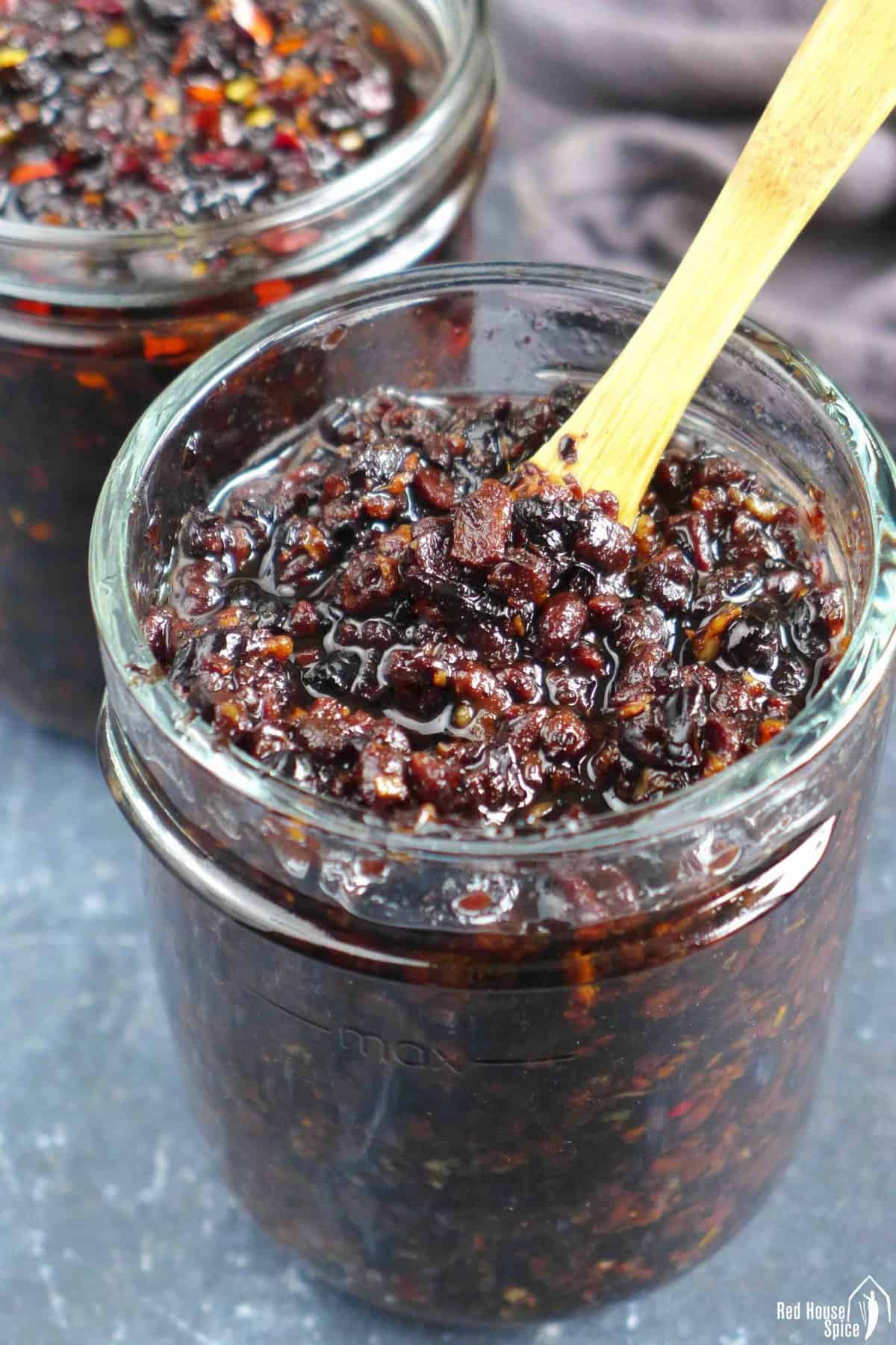
Jump to:
What is black bean sauce
Black bean sauce (Dòu Chǐ Jiàng/豆豉酱) is one of the versatile Chinese sauces that you need if you’re keen on Chinese cuisine. Although it can be found in ready-to-use commercial jars, my recipe might convince you to switch to the tastier and healthier homemade version.
This dark-colored, vegan sauce is made by frying fermented black beans (find more about this ingredient in later sections) with garlic and ginger in oil that has been infused with scallions and onions. It is then seasoned with soy sauce, rice wine, five-spice powder and sesame oil.
It has an aromatic, savory, earthy, and umami-packed taste. This complex flavor profile makes it a great pantry staple for a variety of delicious Chinese dishes, such as stir-fries, fried rice/noodles, steamed or braised dishes, and more.
The shop-bought black bean sauce often has a semi-smooth texture and a very salty taste, which I found overpowering. My homemade version is much chunkier, adding a more enjoyable texture to dishes. Additionally, it has a more sophisticated, balanced taste that boosts the aroma, not just saltiness.
Top tips
Before we dive into the details of the recipe, let me share a few tips to bear in mind:

- This recipe offers two versions: original and spicy
- Fermented black beans, the key element of the sauce, can not be replaced by other ingredients
- But you’re free to adjust other ingredients to suit your taste
- Leave the sauce to infuse for 24 hours before consuming
Ingredients and substitutes
Here are what you need to make black bean sauce:
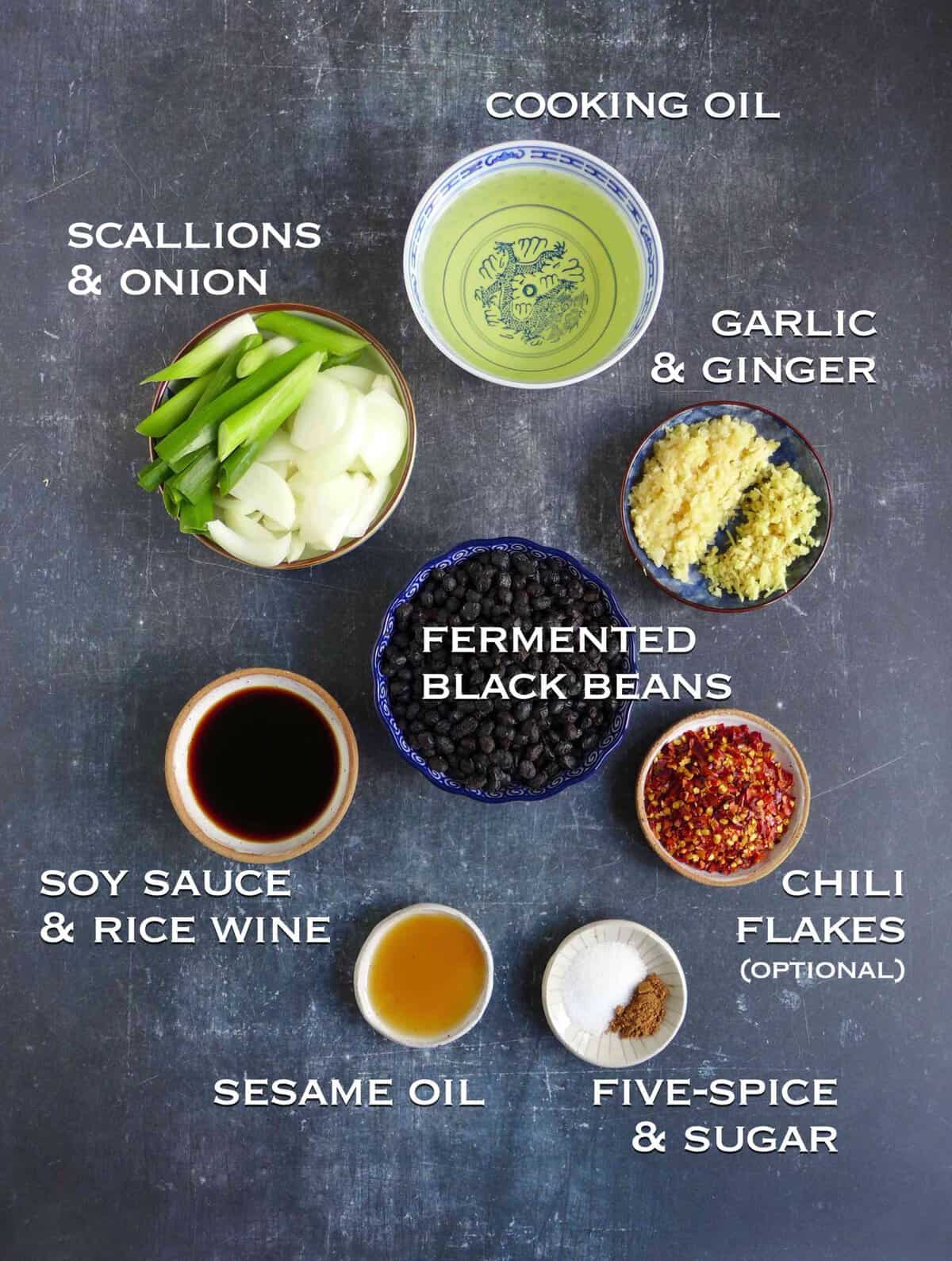
- Fermented black beans (read more on this ingredient in the next section)
- Neutral cooking oil. It can be sunflower, rapeseed, canola, corn, soybean, vegetable oil, etc.
- Aromatics: Scallions and onions (or shallots) are used to infuse the oil. Garlic and ginger are there to complement the earthy fragrance of the beans.
- Seasonings. You’ll need light soy sauce, Shaoxing rice wine (or dry sherry), Chinese five-spice powder (or ground white pepper), sugar, and sesame oil.
- Chili flakes (optional), aka crushed dried chili pepper. Include this ingredient if you enjoy a hot sauce and a vibrant red color. Choose the variety with the heat level that suits your palate.
About fermented black beans

Fermented black beans, known as Dòu Chǐ/douchi/豆豉 in Chinese, are made from black soybeans, not black turtle beans that you find in Latin American Cuisine. They are fermented with salt. Ginger and/or spices may also be used in the fermentation process. Aromatic, earthy, salty, and slightly bitter and sweet, they have a complex flavor that cannot be replicated by any other ingredient.
They are a unique ingredient in Chinese cuisine and are not commonly found in mainstream supermarkets outside of China. However, they are available in most Chinese grocery stores and on popular online shopping platforms like Amazon.
On the package, fermented black beans are often given different names in English, such as Salted Black Beans or Preserved Beans with Ginger, as shown in the image above.
The most popular variety is the dried version (shown in the image above), which is sometimes accompanied by dried ginger pieces. It’s the type that I use in all dishes that call for fermented black beans. I do not recommend the less common wet version, which comes in a salty and sweet brine, because I find the beans to be less flavorful but saltier.
Cooking procedure
After you’ve gathered all the ingredients, it only takes three simple steps to make this versatile sauce.
Step 1: Prepare the beans
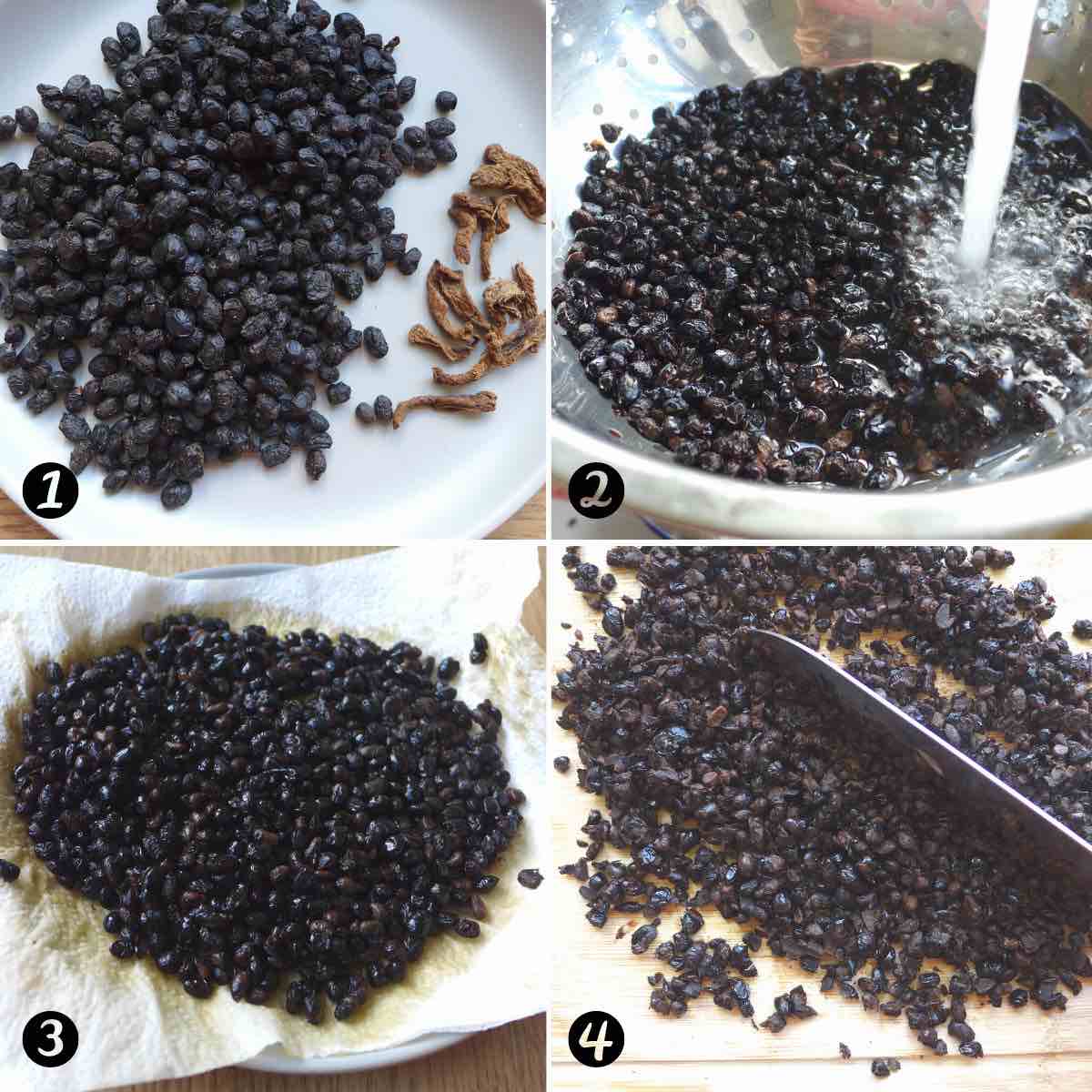
As I mentioned earlier, some brands of fermented black beans contain dried ginger for flavoring. You need to pick them out before preparing the beans.
Rinse the beans under running water to remove surface salt and/or any dust collected during the fermentation process. Drain well, then use paper towels to dry them as much as possible.
Next, coarsely chop the beans into smaller pieces so that their flavor can be fully released in the next step. I also keep some whole for a nice bite.
Step 2: Infusing the oil

Pour a generous amount of cooking oil into a wok/skillet. Add scallions and sliced onion. Over medium heat, fry the aromatics slowly to fully release their aroma.
Once the scallions and onions become brown on the edge (be careful not to burn), use a slotted spoon to remove them from the oil.
🛎 TIP: This process is similar to how you make Chinese Scallion Oil. I don’t recommend you keep the fried scallions and onion in the sauce, because their high water content results in a shorter storage time. However, don’t throw them away. Add them to stir-fried dishes or use them as a topping for noodle dishes.
Step 3: Fry the sauce
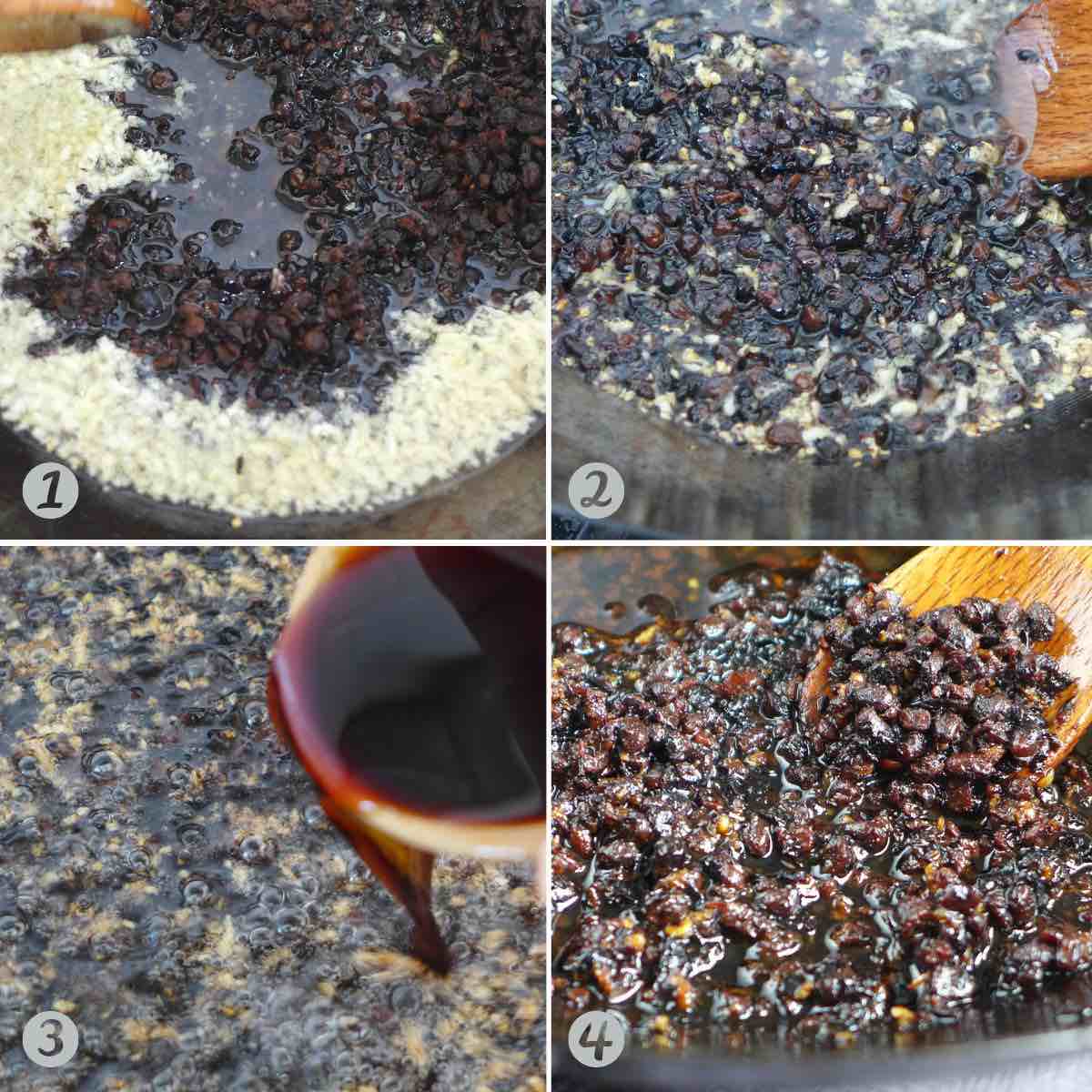
After removing the aromatics, add minced garlic and ginger to the hot oil. Keep the heat on medium. Fry until the garlic turns slightly golden (Be attentive to avoid burning). Then add the beans. Simmer for about 2 minutes while stirring constantly.
Add light soy sauce, Shaoxing rice wine, Chinese five-spice (or ground white pepper), and sugar. Cook for a further 30 seconds or so. Turn off the heat and pour in a little sesame oil to finish.
🌶️ For the spicy version:
If you’re using chili flakes, put them in before you add the seasonings. Fry them with the beans for about 10 seconds.
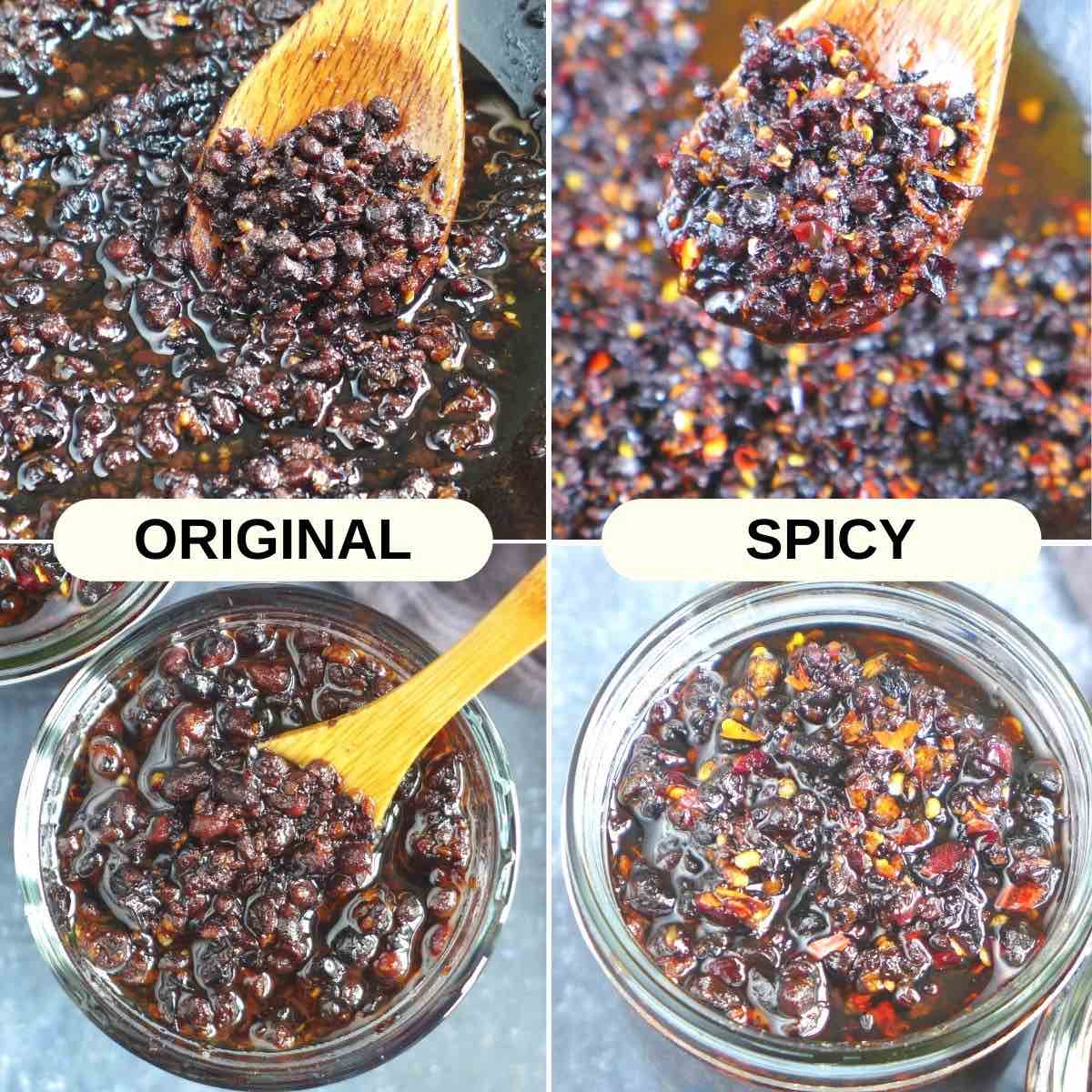
How to store
Allow the black bean sauce to cool completely before transferring it into an air-tight container/jar. You may be eager to use it straight away. However, I suggest you wait for at least 24 hours. This allows the flavors to settle and becomes more fragrant, like how you deal with Homemade Chili Oil.
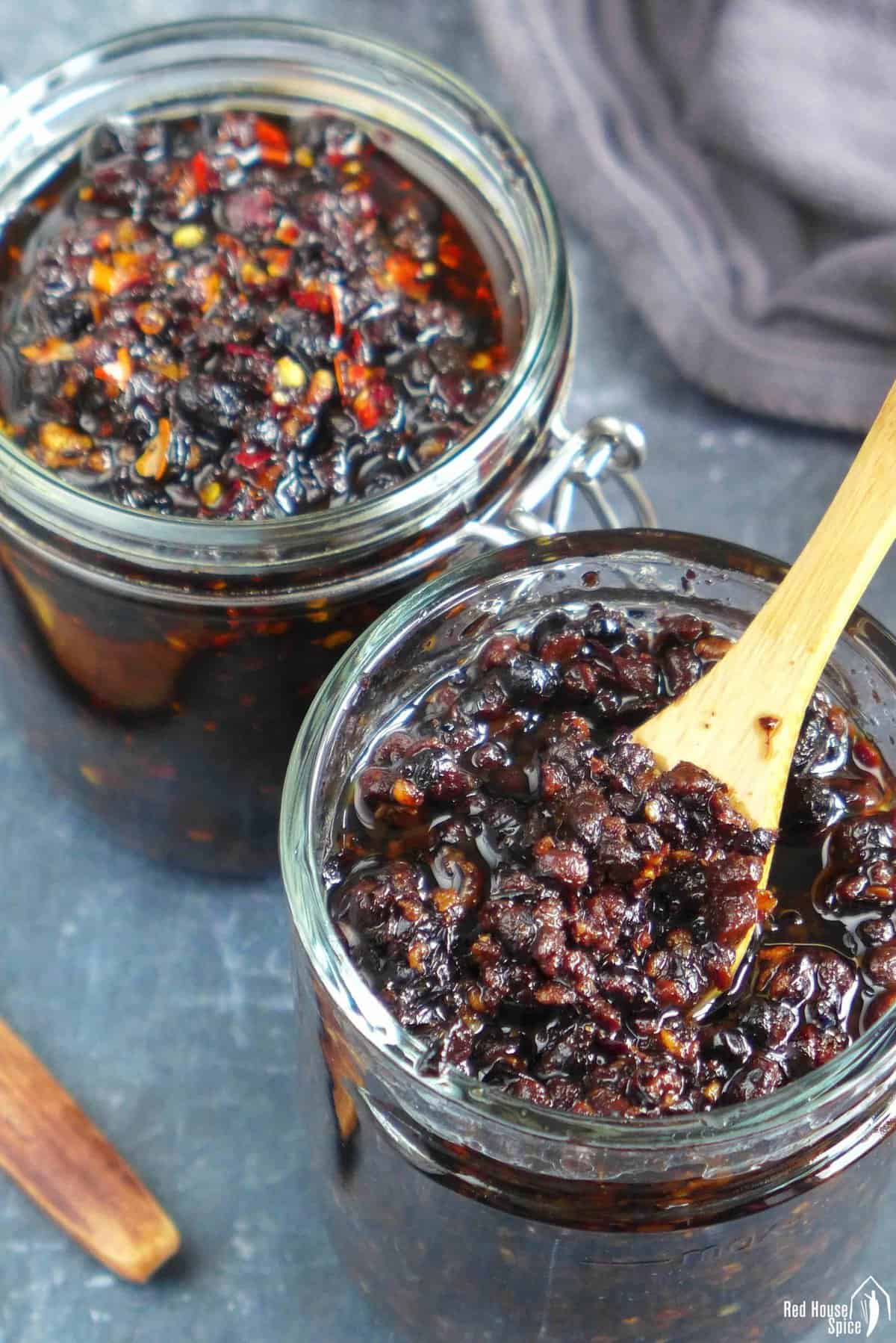
Remember to always use a dry, clean spoon to scoop out the sauce. Tighten the lid and keep the remaining sauce in the refrigerator. Consume it within 1 month.
Ways to use it
Black bean sauce is as versatile as Chinese Chili Oil and can be used in endless ways in your dishes. It can be added to prepared or cooked dishes, or used during the cooking process. Here are some examples of how it can be used:

- As a stir-fry sauce for meat, seafood, eggs, tofu, and vegetables, e.g. Chicken with Black Bean Sauce (see image above), Egg & Chili Stir-Fry, Garlic Bok Choy
- To add extra flavor to fried rice or fried noodles, e.g. Pork Fried Rice, Chow Mein
- To season steamed fish, seafood, and meat, e.g. Steamed Chicken
- To add flavor to braised dishes or stews, e.g. Black Bean Sauce Ribs
- As a substitute for fermented black beans in any recipe, e.g. Hunan Pork Stir-Fry, Tiger Skin Pepper
- As a substitute for other fermented sauces, such as Spicy Doubanjiang used in dishes like Mapo Tofu, Twice Cooked Pork
- As a topping for noodle dishes, e.g. Dan Dan Noodles, Chongqing Noodles
- To add to a dressing for cold appetizers, e.g. Silken Tofu Salad, Scallion Oil Chicken
- As a spread for bread or buns, e.g. Plain Steamed Buns
- As a filling item for folded bao buns, e.g. Pork Belly Gua Bao
🛎 NOTE: When using black bean sauce in some of the example dishes above, you’d need to reduce or omit some of the salty ingredients in the original recipes. Be adventurous to experiment with it to find the optimal flavor combination.
Other homemade condiments
Here are some Chinese pantry essentials that you might find appealing:
📋 Recipe
Love this recipe? Please leave a 5-star 🌟🌟🌟🌟🌟 rating in the recipe card below & if you REALLY like it, consider leaving a comment as well!
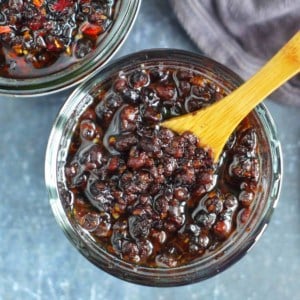
Black Bean Sauce (豆豉酱)
Ingredients
- 1 cup fermented black beans - see note 1
To infuse the oil
- ¾ cup neutral cooking oil
- 2 stalk scallions - cut into sections
- 1 small onion - sliced
To fry the beans
- 1 head garlic - minced
- 1 tablespoon ginger - minced
- 2 tablespoon chili flakes - or to taste (optional)
- 2 tablespoon light soy sauce
- 1 tablespoon Shaoxing rice wine
- 1 teaspoon sugar
- ½ teaspoon Chinese five spice powder - or ground white pepper
- 1 teaspoon sesame oil
Instructions
Prepare the beans
- Take fermented black beans out of their package. Discard dried ginger pieces if there are any. Rinse the beans under running water.
- Drain well then spread them over kitchen paper. Use more paper to dry them as much as possible.
- Coarsely chop the beans into smaller pieces, leaving some whole. Set aside.
Infuse the oil
- Pour oil into a dry, clean wok/saucepan. Add scallions and onion. Simmer over medium heat until they brown on the edge (it took me around 6 minutes, but the time required may vary).
- Remove all the solids leaving the infused oil in the wok/saucepan.
Fry the beans
- Put minced garlic and ginger into the hot oil. Fry over medium heat until the garlic turns slightly golden (do not burn). Add the chopped beans. Stir and toss for about 2 minutes to extract moisture out of the beans.
- If using chili flakes, add them at this moment. Sizzle for 10 seconds or so. Then add light soy sauce, Shaoxing rice wine, Chinese five spice powder, and sugar. Cook for a further 30 seconds or so.
- Remove the wok/saucepan from the heat then add sesame oil. Mix well then leave to cool.
Store the sauce
- Once completely cool, transfer the sauce to an airtight jar/container. Best to allow 24 hours to further infuse before using the sauce.
- You can keep the sauce in the refrigerator for up to 4 weeks. Make sure to always use a clean spoon to scoop out the sauce (see note 2).
NOTES
NUTRITION
NUTRITION DISCLOSURE: Nutritional information on this website is provided as a courtesy to readers. It should be considered estimates. Please use your own brand nutritional values or your preferred nutrition calculator to double check against our estimates.


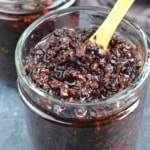


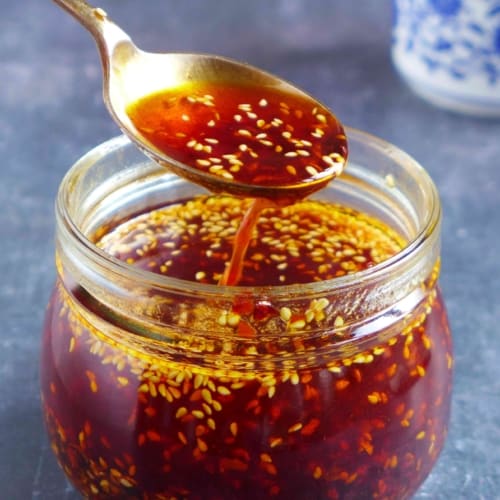
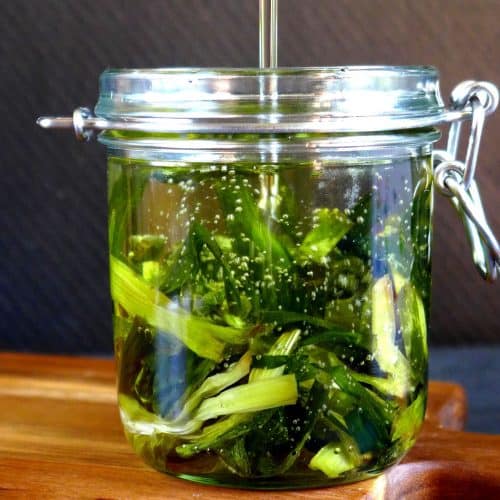

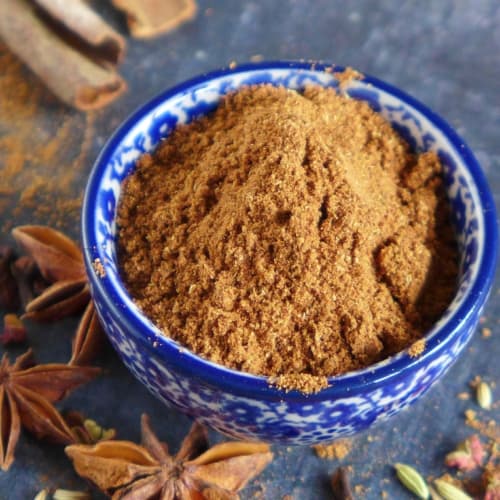

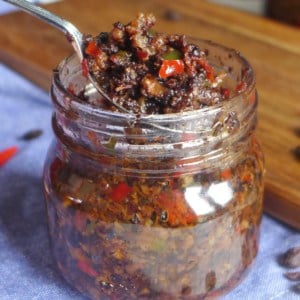
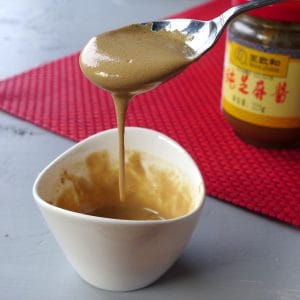
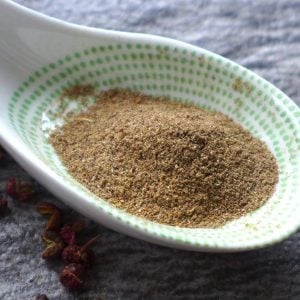
Superb recipe and easy to follow instructions. I made it tonight and finally have a suppoly of read made sauce for when those cravings hit. Thanks sso much for sharing.
My pleasure to share Liz! Hope you’ll make many delicious dishes with this versatile sauce.
At last I know what to do with my black fermented beans. Like the easily available ingredients, and the fiery option!
The way you explain each recipe makes me a good cook. You have a way to explain everything so precisely it makes it fun to cook. I’m an old man (77) who has cooked for myself since I have lived alone. Taught by my mother, when I was a child, all the basic cooking rules to survive. I enjoy cooking and chinese foods have been my favorite although I try all types of recipes.Your instructions have made me refine all my chinese recipes to your way especially the hot and sour soup recipe which is one of my favorites. Thanks for your web site.
Wonderful to hear that Daniel! Your message has made my day! I hope you’ll find more inspiration on my blog. Happy cooking!